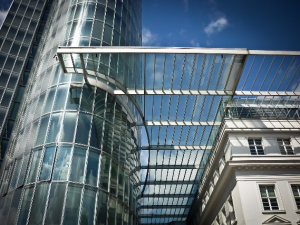Materials Petal certification under the Living Building Challenge isn’t the same as full LBC certification. But it’s nothing to sniff at.
And that may be only the second most significant point to remember about Etsy’s announcement today that its Brooklyn headquarters has attained Materials Petal certification. The category generally is regarded as the most challenging of the seven Petals required under the full LBC program.
What’s the most significant point? To my mind, it’s how niftily Materials certification fits into the company’s brand. Many vendors on the e-commerce marketplace site sell handcrafted products made from sustainable or locally available materials. Research by craftspeople for such source materials can be materials as idiosyncratic as the painstaking process that building designers must follow as they try to find the materials and products under LBC’s exacting standards. Josh Wise, Etsy’s director of workplace ecology and design, wrote this last year about materials selection:
As part of this process, we’ve vetted more than 1500 items in the space to avoid toxic or harmful chemicals — that’s at least 1500 conversations with manufacturers about how their items were made, ranging from the paint on our walls to the flame retardants in our upholstery.
Wise also boasted that “our new headquarters is currently the only LBC project that’s largely furnished with handmade and micro-manufactured furniture made by local artists and Etsy sellers.” Tables, desks, light fixtures and art from Etsy sellers are among the Red List free products in the building.
The company also announced today its commitment to zero waste stream by 2020. In the process, the company created software — which it’s calling DIVERTsy — to track the building’s waste stream. And, in the spirit of ILFI’s efforts to encourage replication of sustainable progress, Etsy is making that software available for others to use.
Read the International Living Futures Institute “case study” on the project here.
Feature photo above provided by Emily Andrews/Etsy.






